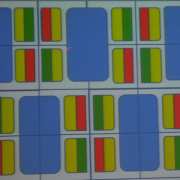UDC’s 2015 OLED Emitting Materials Revenue $ 113 million, a 11% Decrease…Still Leading Market

Source : UDC
Hyunjoo Kang / Reporter / jjoo@olednet.com
UDC (Universal Display) that is dominating the global OLED emitting materials market, recorded 11% reduced OLED emitting materials revenue in 2015 compared to 2014. Despite the decreased revenue, it maintained its top place in the market.
According to 2016 OLED Emitting Material Annual Report, published by UBI Research, UDC recorded approximately $ 113 million in 2015 OLED emitting materials revenue. In 2014, this company’s OLED emitting materials revenue recorded $ 127 million and led the global market, and maintained its position in 2015.
In particular, this company is a dominating presence in dopant materials sector. In 2015, UDC occupied 82% of the dopant materials sector, and the rest of the companies share the remaining 18%. Based on the phosphorescent patents, it is supplying phosphorescent red and green dopant to Samsung Display and LG Display.
Following UDC’s top place in 2015 global OLED emitting materials market in terms of revenue, Idemitsu Kosan ranked 2nd, and this was followed by Novaled, Dow Chem., and Samsung SDI. In 2013, Dow Chem. was at the top of the market, but since 2014 UDC overtook the leadership. In 2016, LG Display’s OLED TV mass production line operation rate, materials structure of Galaxy Note series to be mass produced in H2, and other factors are expected to affect the OLED emitting materials market.
UDC is scheduled to announce 2016 Q1 performance on 5 May (local time).








![[Fig. 1], Source: UDC, IMID 2015](http://www.olednet.com/wp-content/uploads/2015/08/야31.jpg)
![[Fig. 2], Source: UDC, IMID 2015](http://www.olednet.com/wp-content/uploads/2015/08/야4.jpg)
![[Fig. 3], Source: UDC, IMID 2015](http://www.olednet.com/wp-content/uploads/2015/08/야51.png)
